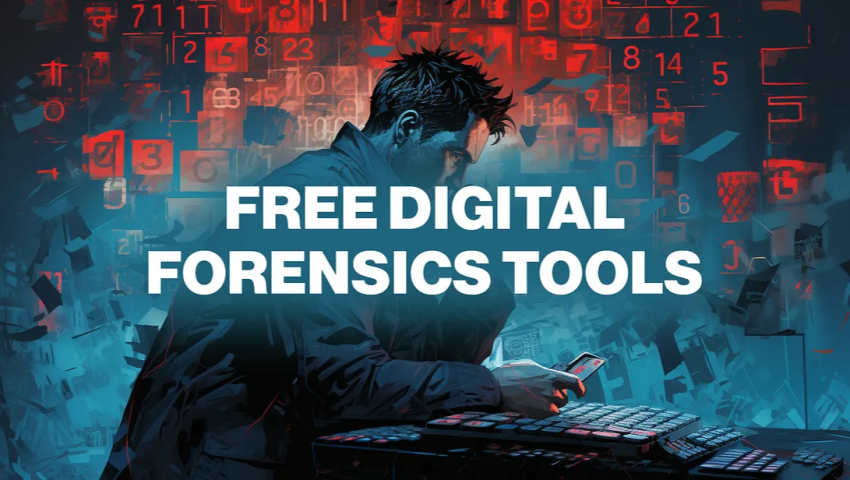
Top 10 Open-Source Digital Forensic Tools Every Investigator Should Know
Uncover the power of free and open-source software (FOSS) in digital forensics. This guide explores the top 10 open-source tools essential for any investigator's toolkit, from disk imaging to mobile analysis.
1. Autopsy: The User-Friendly Powerhouse
Best for: Digital forensics beginners and professionals needing a comprehensive GUI-based suite.
Description: Autopsy is a sleek, graphical front-end for The Sleuth Kit (TSK) and other libraries. It's often the first open-source tool new investigators learn because it bundles many essential functions into an intuitive interface.
Key Features:
Graphical Timeline Analysis: Visually explore file system activity.
Keyword Searching: Regex and indexed keyword searching.
Web Artifact Analysis: Extracts browser history, downloads, cookies, and more.
Registry Analysis: Parses Windows Registry files for user activity.
Multimedia Recovery: Identuces and recovers images and videos based on file signatures.
Threat Detection: Modules for identifying indicators of compromise (IOCs).
Ideal Use Case: Performing a triage examination on a Windows machine, analyzing user activity, and creating a timeline of events.
2. The Sleuth Kit (TSK): The Command-Line Foundation
Best for: Forensic purists and investigators who need granular control from the command line.
Description: The Sleuth Kit is the engine behind Autopsy. It's a collection of powerful command-line utilities for analyzing disk images and performing in-depth forensic investigations of file systems (NTFS, FAT, EXT, etc.).
Key Features:
File System Analysis: Tools like
fls(list files) andicat(extract file content) allow precise data carving.Disk Imaging: Acquire evidence with
dcfldd.Timeline Generation: Create detailed system timelines using
mactime.Volume and Partition Analysis: Investigate disk structures with
mmlsandmmstat.
Ideal Use Case: Scripting a custom forensic analysis process or performing a deep dive into a specific file system structure.
3. Volatility: The Memory Forensics Framework
Best for: Incident responders and malware analysts performing memory analysis.
Description: Volatility is the world's leading framework for analyzing volatile memory (RAM) dumps. It's an indispensable tool for investigating advanced malware, rootkits, and sophisticated attacks that leave no trace on the disk.
Key Features:
Process Analysis: List running processes, DLLs, and network connections at the time of capture.
Kernel Module Detection: Find hidden or malicious kernel drivers.
Extract Artifacts: Pull out commands from cmd history, passwords from memory, and injected code.
Support for Diverse OSes: Analyzes memory from Windows, Linux, macOS, and Android.
Ideal Use Case: Responding to a suspected ransomware infection to identify the malicious process and extract its encryption key from memory.
4. Wireshark: The Network Protocol Analyzer
Best for: Network forensic analysts and anyone needing to analyze packet captures (PCAP).
Description: Wireshark is the quintessential tool for deep-dive network analysis. It allows you to capture and interactively browse the traffic running on a computer network, making it crucial for investigating network-based incidents.
Key Features:
Deep Inspection: Decodes thousands of network protocols.
Live Capture & Offline Analysis: Capture live traffic or analyze saved PCAP files.
Powerful Filtering: Use display filters to zero in on exactly the traffic you need.
Flow Reconstruction: Reconstruct entire streams of data, like HTTP sessions or file transfers.
Ideal Use Case: Investigating a data exfiltration attempt by analyzing network traffic to identify the destination IP and the data transmitted.
5. Bulk Extractor: The Fast Data Carver
Best for: Quickly scanning disks and images for specific data types like emails, credit cards, and URLs.
Description: Bulk Extractor is a high-performance digital forensics tool that scans a disk image, file, or directory and extracts useful information without parsing the file system. This makes it incredibly fast and effective for finding specific pieces of data.
Key Features:
Speed: Processes data at a high rate by ignoring file system structures.
Wide Range of Scanners: Finds email addresses, credit card numbers, URLs, JPEG EXIF data, and more.
Creates Feature Files: Outputs extracted data into separate files for easy review.
Ideal Use Case: Rapidly identifying all email addresses and social security numbers present on a drive during an e-discovery request.
6. Guymager: The Forensic Imager
Best for: Creating forensically sound disk images on Linux.
Description: Guymager is a fantastic open-source forensic imager for Linux. It provides a simple GUI for acquiring media in various formats (DD, E01, AFF) with robust hashing and verification.
Key Features:
Fast Imaging: Multi-threaded design for speedy acquisitions.
Forensic Soundness: Creates verified hashes (MD5, SHA-1/256) to ensure evidence integrity.
Multiple Formats: Supports raw (dd) and expert witness (E01) formats.
Ideal Use Case: Creating a forensically sound bit-for-bit copy (image) of a suspect's hard drive on your Linux examination workstation.
7. FTK Imager: The Windows Acquisition & Preview Tool
Best for: Forensic imaging and evidence preview on Windows systems.
Description: While the full FTK suite is commercial, FTK Imager is a free tool from Exterro. It's a stalwart in the community for quickly creating disk images, previewing evidence, and exporting individual files from an image.
Key Features:
Evidence Acquisition: Create disk images and memory dumps on Windows.
Evidence Preview: Mount and explore image files without altering them.
File Export: Easily recover and export files from an image for analysis.
Ideal Use Case: Quickly previewing the contents of a seized USB drive or creating a simple disk image on a Windows machine.
8. OSForensics: The "Freemium" All-Rounder
Best for: Investigators who want a commercial-grade GUI with a powerful free version.
Description: OSForensics offers a robust free version for personal use. It provides many of the same capabilities as Autopsy but with a different feature set and workflow, making it a great tool to have as a secondary option.
Key Features (Free Version):
File Indexing & Searching: Very fast search across indexed drives.
Email Analysis: Parses PST and OST files.
RAM Capturer: A lightweight tool for capturing memory.
Data Carving: Recovers deleted files.
Ideal Use Case: Quickly indexing a drive to find files containing specific keywords or analyzing a Windows Outlook PST file.
9. Magnet RAM Capture: For Easy Memory Acquisition
Best for: Incident responders needing a simple, reliable tool to capture Windows memory.
Description: Another excellent free tool from a commercial vendor (Magnet Forensics). Magnet RAM Capture is designed to do one thing and do it well: capture the physical memory of a live Windows system with minimal impact.
Key Features:
Lightweight & Stable: Designed to be safe to run on live systems.
Multiple Output Formats: Saves memory in a format compatible with Volatility and other analysis tools.
Free & Simple: No complex setup; just run the executable and point it to an output location.
Ideal Use Case: First responders capturing the memory of a compromised server before taking it offline for a full disk image.
10. Mobile Verification Kit (MVT): For Mobile Device Security
Best for: Analyzing iOS and Android devices for signs of compromise.
Description: Developed by Amnesty International, MVT is a relatively new but critical tool. It helps forensicators and security professionals identify potential compromises on mobile devices, particularly by advanced persistent threats (APTs).
Key Features:
Decrypts iOS Backups: Processes encrypted iOS backups if the password is known.
Extracts Artifacts: Parses logs and data for known malicious indicators.
IOC Detection: Checks device data against a list of provided Indicators of Compromise.
Ideal Use Case: Investigating a high-profile target's iPhone for potential nation-state spyware like Pegasus.
Mrityunjay Singh
Leave a comment
Your email address will not be published. Required fields are marked *

